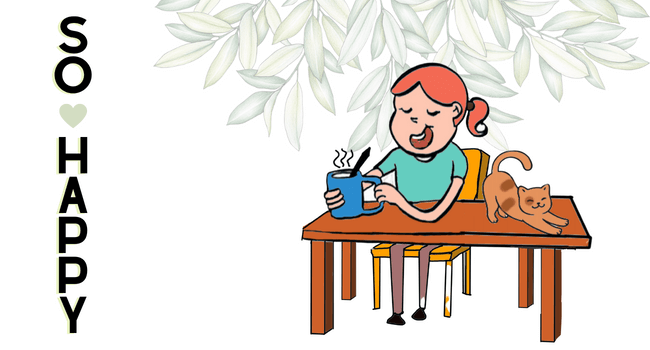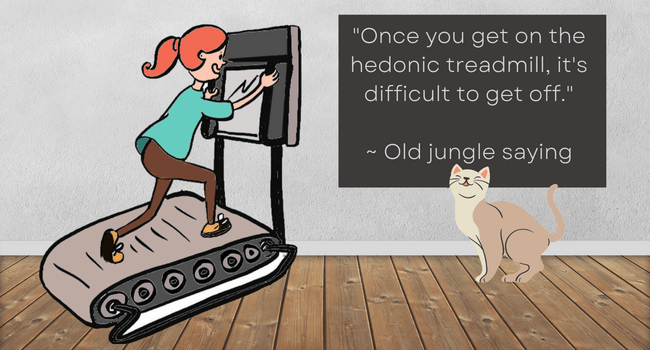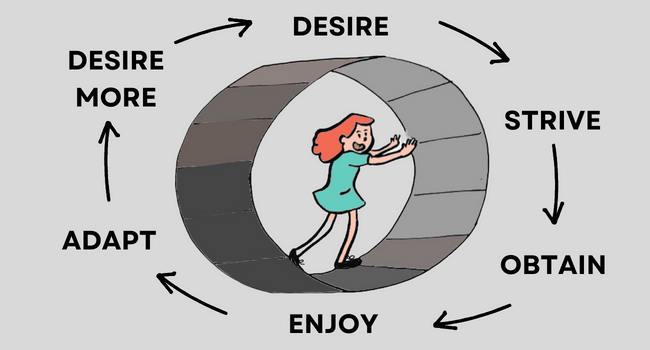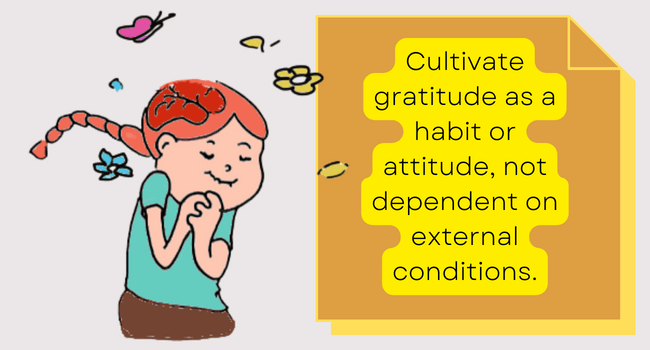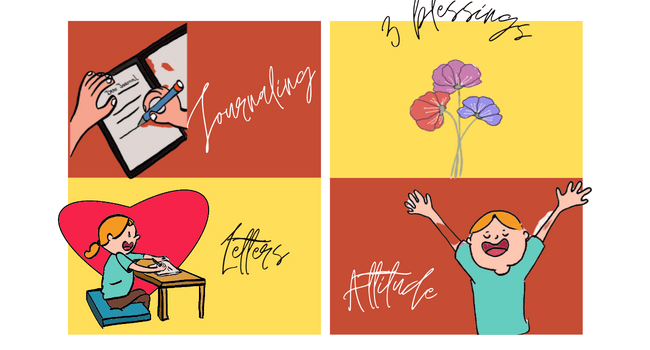In 2021, I took a month-long workation (work + vacation!) to a popular hill station. On day 1, it was a dream come true. I spent hours in our hotel room gallery, mesmerized by the breathtaking view of the trees and mountains. I thought I would be in ecstasy for the next one month. The happiness I felt was indescribable.
And yet, by the third week, my sense of wonder was gone. The lush mountains, the cold wind, and the quiet atmosphere were still there but I got used to the views – I had adapted to it.
Unfortunately, this adaptation to even the most beautiful things is part of being a human.
We’re all in the pursuit of happiness. Yet it always seems to evade us. No matter what we do, happiness always seems ‘temporary.’
Why does happiness evade us?
When something good happens in our life, whether it’s a salary hike or achieving a personal goal, our joy is short-lived. We return to what is called the happiness set-point. In psychology, this phenomenon is called hedonic adaptation – allow me to be a little nerdy.
This concept is also known by the name ‘the hedonic treadmill.’ No matter how much or how fast you run on a treadmill, you will be at the same place. The analogy explains the tendency of human beings to return to a set happiness level despite the ups and downs of life.
Yes, the downs too. Let’s say, God forbid, someone lost an arm in an accident. Undoubtedly, it would be devastating for a while – even for a long time. But the person would eventually return more or less to their level of happiness before the accident.
Is the quest for happiness doomed?
Fortunately, it isn’t. There’s hope.
Despite its name, the hedonic set-point is not a point but a range within which it can vary to some extent. Hence it’s possible to move our hedonic set point. Also, one can slow the hedonic adaption when something good happens and speed it up when something terrible happens.
The hedonic treadmill is a cycle. A pattern. We get habituated to the pleasures we once desired, and then we seek new pleasures. It seems like we are always back to where we started. We feel as if chasing happiness is a never-ending quest.
Desire > Strive > Obtain > Enjoy > Adapt > Desire more
Notice how we’re back to ‘desire’ every single time. But can we stop the adaption?
Yes, we can. When you remind yourself that you have something amazing in your present moment or life and feel grateful for it, you will not take it for granted. That’s how gratitude slows down the hedonic adaptation.
On the other hand, we can hasten the hedonic adaptation when something bad happens in our life. And it’s what makes us resilient when times are hard.
Another thing to keep in mind is that the happiness set-point is a range rather than a precise point. And within that range, gratitude may be able to move the happiness set-point.
What gratitude is and isn’t
I mentioned the word gratitude earlier. By cultivating gratitude, one can learn how to be happy. A sense of gratitude uniquely predicts satisfaction and higher quality of life.
There are three parts or stages of gratitude:
- Identifying things and people we feel grateful for
- Acknowledging them
- Appreciating them
Without the initial awareness, the appreciation can appear insincere or inauthentic. Gratitude is not appreciation. It’s the state of one being grateful for the pleasures we have. Gratitude comes naturally after recognition and acknowledgment and is expressed through appreciation.

Become A Morning Person Bootcamp
For calm mornings with a daily meditation & journaling routine
Benefits of gratitude
Practicing gratitude is vital for our psychological and physical health, research suggests. It helps us maintain strong, healthy relationships with people close to us. Moreover, gratitude is consistently linked with greater happiness in positive psychology.
Despite the benefits, we don’t undertake gratitude practices often. Why?
Because practicing gratitude isn’t easy for everyone.
There are many possible reasons why:
- Genetic disposition: Gratitude is a complex emotion. Research indicates that our genes may be responsible for why gratitude comes easier to some people than others.
- Personality traits: Certain personality factors like cynicism, narcissism, materialism, and envy can prevent individuals from being happy. A certain level of emotional maturity is also required to cultivate thankful appreciation for life.
But there’s no need to fall into despair. There are exercises that anyone can do to build their gratitude muscle (more on that later).
How gratitude changes your brain
There’s no doubt that gratitude is linked with happiness. However, most studies have sampled well-functioning people.
A 2017 gratitude study was conducted at the Greater Good Science Center, on people with mental health conditions such as anxiety and depression. Can they learn how to be happy by practicing gratitude?
It turns out they can!
When combined with psychological counseling, practicing gratitude improved the participants’ mental health over time. As it turns out, the brain can be trained to feel grateful.
Myths about gratitude
Before I reveal the gratitude exercises, I want to address certain myths surrounding the subject:
- Gratitude causes complacency
- Gratitude is just positive thinking and ignoring negativity
- Gratitude requires us to be religious
None of this is true. Gratitude, in fact, offers us a sense of purpose. Instead of complacency, it drives desire. It’s also not about ignoring negativity. Gratitude amplifies positivity despite the adverse situation one might be facing.
I have given scientific evidence of why gratitude is necessary for happiness. Even if one is not religious, one can still be grateful by recognizing and acknowledging the good things in life.
How to practice gratitude
Here are 4 gratitude exercises to incorporate into your daily life and benefit from.
1. Maintain a gratitude journal
Journaling is a good way to keep a written account of all the good things and the valued people in your life. Every. Single. Day. The written word is extremely powerful.
In HabitStrong’s ‘Become a Morning Person’ bootcamp, we do gratitude journaling in every session. Check it out.
2. Three blessings exercise
Write down at least three good things that happened today. Then think about why they happened. Then take the time to be grateful. If there was someone who made the blessing possible, express gratitude to them.
This exercise takes the focus away from negative thoughts and channels it towards positive thoughts.
3. Write gratitude letters
Besides journaling, writing gratitude letters is a great way to practice. Write about the good things someone did for you, the effort or sacrifice it might have involved, and how it made you feel. Then express your thankfulness to them.
Sharing the letters will help strengthen the bond too. If not, you can keep the letters like you’d keep your journal.
4. Inculcate the attitude of gratitude
Vow to count your blessings and never miss a day. Be mindful of the good things that happen during the day and acknowledge them. Use inherently positive language and not one that is detrimental to your happiness and mental health.
By following these gratitude exercises, happiness will no longer be an unachievable dream. You can learn how to feel joy no matter the circumstances, pains, and pleasures of life. You will soon notice that the mindset of counting blessings versus burdens enhances your self esteem and brings more optimism into your life.
Expressing gratitude gives you a greater sense of life satisfaction and positive experiences. A grateful disposition improves your relationships with others and invites more positive emotions.
Gratitude practice is a sure-shot way to improve your life and your happiness scores. Everyone loves to have a happy grateful person around. You can learn to be that person and bring joy to yourself and everyone around you.

